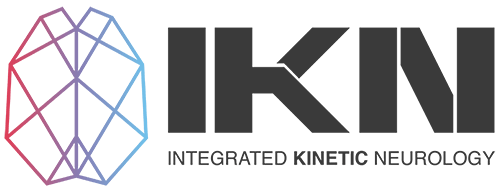
Biomechanics Always Matter
We’ve been getting a lot of messages from other rehab professionals asking why we go into detail about the mechanical interactions across our anatomy, and if it’s necessary to understand these interactions?
Well, we are physical creatures that interact with physical forces every single day. Biomechanics represents those forces and how our anatomy organises itself to deal with those forces.
So, we believe that it is necessary to understand these interactions, especially when a large part of our role as rehab practitioners involves choosing exercises that aim to improve the way an individual interacts with these physical forces.
So, for us, the answer is YES. Biomechanics always matter. However, this doesn’t mean that it’s the ONLY thing that matters. It doesn’t mean that it’s the most important feature that should guide your rehabilitation, because there are many non-physical factors that will influence our movement behaviour and how we handle those forces.
When might they not matter as much?
While we are constantly interacting with physical forces, we also have to appreciate the unique individual that interacts with those physical forces.
The unique individual that interacts with these physical forces carries with them unique past experiences, beliefs, emotions etc.
Non-physical factors like these can influence the way we interact with these physical forces!
When clients present to us with a pain experience, we have to consider both physical and non-physical stressors during the assessment & rehabilitation process, because pain is ultimately an output from the nervous system.
It’s a communication strategy that the nervous system uses to tell you that it perceives a threat.
Can the way an individual interacts with physical forces / stressors influence the nervous systems perception of threat. Of course!
Can the way an individual thinks about those forces influence the nervous systems perception of threat? Absolutely!
Case Insight
A client presented to my clinic with a 6 year history of low back pain, and was struggling to engage in meaningful activities.
One key piece of information that I gather during the subjective assessment, is the previous treatment that the client has received. This doesn’t just represent information about what kind of exercises/manual strategies have been used, but also what kind of advice they have received.
Of course, this information then needs to be integrated with the individual’s symptomatic behaviour (aggravating / easing factors), previous injuries/pain experiences, daily movement habits, goals etc.
This client noted that she was told by a previous therapist that she needs to avoid movements that involve spinal flexion, and to instead flex from their hips. She noted that this was secondary to the therapists belief that spinal flexion was causing her pain.
This is where it got interesting…
She noted that her pain is aggravated when sitting and standing for long periods while keeping her spine extended, but noted that it eases when she allows her lumbar spine to flex / slouch..
However, she stated that she avoids that as much she can based on her previous therapists’ advice to avoid spinal flexion.
So, we have a situation where the client is avoiding a specific muscle & joint behaviour (the muscle & joint behaviour that is required to enable the lumbar spine to flex), that is entirely the result of her belief (a non-physical feature), and she’s avoiding this even through it eases her symptoms!!!
This is how impactful our beliefs can be!
In the health & rehab space, we need to appreciate that beliefs have movement consequences.
How do we address this?
Can we simply use our knowledge about biomechanics to gradually expose the muscles & joints to load in lumbar flexion?
She noted that she feels better in lumbar flexion, so surely all we need to do is build her tolerance and capacity to physical forces in that position, right? Not so fast!
In the rehab world, we can use physical load / force application (exercise & manual therapy) and education to influence our clients’ movement behaviour.
In this situation, we need to educate first and work towards reframing these unhelpful beliefs that she developed from her previous therapist.
If these muscle & joint behaviours are the result of unhelpful beliefs, then simply focusing on biomechanics is not going to be enough to facilitate positive change.
We need to educate her about the nature of pain.
We need to educate her about the amazing adaptability of her body.
We need to educate about the necessity of spinal flexion to enable her to engage in her meaningful activities.
We need to educate to reduce her fear and promote confidence with how she manages forces, loads, and physical stressors.
Of course, we also need to eventually apply physical load / force to her muscles & joints across the rehab plan, but it needs to be wrapped up with these educational features to promote confidence in her body again.
In a nutshell..
While influencing biomechanical features during rehab might not be the priority depending on the unique individual and their unique problems / concerns, they always matter because we are always interacting with physical forces. Non-physical features like our beliefs will directly influence biomechanical relationships, and so both physical & non-physical features need to be integrated into the rehabilitation process.
